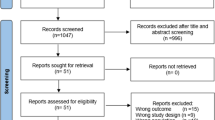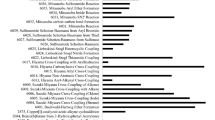Abstract
Life expectancy is growing especially in developed countries. In this regard, aging-associated diseases such as Alzheimer’s disease (AD) are more common. Multi interconnected pathological factors involved in AD demand multi-target therapeutics. AChE, as a well-known target in AD, decreases the acetylcholine (ACh) in cholinergic synapse and, besides, increases the rate of amyloid-beta (Aβ) aggregation. To block the destructive effects of AChE on cholinergic neurons in AD, we designed a peptidic inhibitor of the peripheral anionic site (PAS). The PAS plays a crucial role to attract and direct the ACh to the enzyme active site and increase the rate of Aβ aggregation by changing the folding state. We utilized the template-based approach in combination with molecular docking, molecular dynamic simulation, and data mining to design a peptide library. Scoring was performed according to binding energy and the interaction profile of AChE inhibitors. The best candidate (p8, RMLRTTRY) was synthesized using solid-phase peptide synthesis, purified by RP-HPLC, and identified by ESI–MS. The inhibitory effect of p8 on AChE was 102.2 ± 15.2 μM. The kinetic and molecular modeling studies indicated the mixed inhibition mechanism for p8. The Arg residues in p8 had an essential role in binding to PAS.
Graphical abstract






Similar content being viewed by others
Data availability
Data were reported in the manuscript as much as possible, and other materials will be available via request to the corresponding author.
Code availability
As detailed for each software application in the “Material and methods” section.
References
Koehn FE, Carter GT (2005) The evolving role of natural products in drug discovery. Nat Rev Drug Discov 4:206–220
Sachdeva S (2017) Peptides as ‘drugs’: the journey so far. Int J Pept Res Ther 23:49–60
Henninot A, Collins JC, Nuss JM (2018) The current state of peptide drug discovery: back to the future? J Med Chem 61:1382–1414
Hollenstein K, de Graaf C, Bortolato A et al (2014) Insights into the structure of class B GPCRs. Trends Pharmacol Sci 35:12–22
Lau JL, Dunn MK (2018) Therapeutic peptides: historical perspectives, current development trends, and future directions. Bioorg Med Chem 26:2700–2707
Saroj Devi N, Shanmugam R, Ghorai J et al (2018) Ligand-based modeling for the prediction of pharmacophore features for multi-targeted inhibition of the arachidonic acid cascade. Mol Inform 37:1700073
Bolognesi ML, Cavalli A (2016) Multitarget drug discovery and polypharmacology. ChemMedChem 11:1190–1192
Wang N, Qiu P, Cui W et al (2019) Recent advances in multi-target anti-Alzheimer disease compounds (2013 up to the present). Curr Med Chem 26:5684–5710
(2020) 2020 Alzheimer’s disease facts and figures. Alzheimer’s Dement 16:391–460. https://doi.org/10.1002/alz.12068
Hampel H, Mesulam M-M, Cuello AC et al (2019) Revisiting the cholinergic hypothesis in Alzheimer’s disease: emerging evidence from translational and clinical research. J Prev Alzheimer’s Dis 6:2–15
Maraković N, Knežević A, Vinković V et al (2016) Design and synthesis of N-substituted-2-hydroxyiminoacetamides and interactions with cholinesterases. Chem Biol Interact 259:122–132
Johnson JL, Thomas JL, Emani S et al (2005) Measuring carbamoylation and decarbamoylation rate constants by continuous assay of AChE. Chem Biol Interact 157:384–385
Inestrosa NC, Dinamarca MC, Alvarez A (2008) Amyloid–cholinesterase interactions: implications for Alzheimer’s disease. FEBS J 275:625–632
Saxena AK, Saini R (2018) The structural hybrids of acetylcholines-terase inhibitors in the treatment of Alzheimer’s disease: a review. J Alzheimers Neurodegener Dis 4:1–25
Cheung J, Rudolph MJ, Burshteyn F et al (2012) Structures of human acetylcholinesterase in complex with pharmacologically important ligands. J Med Chem 55:10282–10286
Su G, Zhao T, Zhao Y et al (2016) Effect of anchovy (Coilia mystus) protein hydrolysate and its Maillard reaction product on combating memory-impairment in mice. Food Res Int 82:112–120
Zare-Zardini H, Tolueinia B, Hashemi A et al (2013) Antioxidant and cholinesterase inhibitory activity of a new peptide from Ziziphus jujuba fruits. Am J Alzheimer’s Dis Other Dementias® 28:702–709
Malomo SA, Aluko RE (2016) In vitro acetylcholinesterase-inhibitory properties of enzymatic hemp seed protein hydrolysates. J Am Oil Chem Soc 93:411–420
Perumal P, Vasudevan M, Sridevi C, Manikandan S (2017) Anticholinesterase activity of octa peptides related to human histatin 8: in-silico drug design and in-vitro. Asian J Pharm Clin Res 10:115–117
Mondal P, Gupta V, Das G et al (2018) Peptide-based acetylcholinesterase inhibitor crosses the blood-brain barrier and promotes neuroprotection. ACS Chem Neurosci 9:2838–2848
Tahmasebi E, Dastan D, Ebadi A (2020) Design, synthesis and biological evaluation of anticholinesterase peptides: fragment-based vs. template-based peptide design. Bioorg Chem 105:104351
Nachon F, Carletti E, Ronco C et al (2013) Crystal structures of human cholinesterases in complex with huprine W and tacrine: elements of specificity for anti-Alzheimer’s drugs targeting acetyl-and butyryl-cholinesterase. Biochem J 453:393–399
Hess B, Kutzner C, Van Der Spoel D, Lindahl E (2008) GROMACS 4: algorithms for highly efficient, load-balanced, and scalable molecular simulation. J Chem Theory Comput 4:435–447
Ebadi A, Olyaie SS, Dastan D (2020) To be ionized or not to be ionized: the vital role of physicochemical properties of galbanic acid derivatives in AChE assay. J Biomol Struct Dyn. https://doi.org/10.1080/07391102.2020.1764391
Curtin RR, Edel M, Lozhnikov M et al (2018) mlpack 3: a fast, flexible machine learning library. J Open Source Softw 3:726
Kortemme T, Kim DE, Baker D (2004) Computational alanine scanning of protein-protein interfaces. Sci STKE 2004:pl2–pl2
Laskowski RA, Jabłońska J, Pravda L et al (2018) PDBsum: structural summaries of PDB entries. Protein Sci 27:129–134
Dominguez C, Boelens R, Bonvin AMJJ (2003) HADDOCK: a protein− protein docking approach based on biochemical or biophysical information. J Am Chem Soc 125:1731–1737
Dastan D, Fasihi K, Ebadi A (2020) From venom to AChE inhibitor: design, molecular modeling, and synthesis of a peptidic inhibitor of AChE. Int J Pept Res Ther. https://doi.org/10.1007/s10989-020-10103-w
Waldrop GL (2009) A qualitative approach to enzyme inhibition. Biochem Mol Biol Educ 37:11–15
Axelsen PH, Harel M, Silman I, Sussman JL (1994) Structure and dynamics of the active site gorge of acetylcholinesterase: synergistic use of molecular dynamics simulation and X-ray crystallography. Protein Sci 3:188–197
Fehrentz J-A, Martinez J, Subra G, Amblard M (2006) Methods and protocols of modern solid phase peptide synthesis. Mol Biotechnol 33:239–254
Acknowledgements
We would like to thank the Research and Technology Vice-chancellor of Hamadan University of Medical Sciences for financial support.
Funding
This research was funded by Vice-chancellor for Research and Technology, Hamadan University of Medical Sciences (No. 9604132260).
Author information
Authors and Affiliations
Contributions
The initial idea about a peptidic inhibitors of PAS in AChE was conceived by AE. Accordingly, AE and DD hypothesized the problem and designed the study. AE, RZ and KF performed all the calculations. RZ and KF synthesized the peptide and evaluated the AChE inhibitory effect. AE and DD contributed with results, discussions, and especially during the revision. RZ and KF drafted most of the basic structure of the introduction and methods. AE wrote the main draft of the paper with active help primarily from DD and rigorously revised the paper until satisfactory. All authors have read and approved the final manuscript.
Corresponding author
Ethics declarations
Ethics approval
N/A
Consent to participate
N/A
Consent for publication
N/A
Conflict of interest
The authors declare no competing interests.
Additional information
Publisher's note
Springer Nature remains neutral with regard to jurisdictional claims in published maps and institutional affiliations.
Rights and permissions
About this article
Cite this article
Dastan, D., Zhiyani, R., Fasihi, K. et al. An arginine-rich peptide inhibits AChE: template-based design, molecular modeling, synthesis, and biological evaluation. J Mol Model 28, 86 (2022). https://doi.org/10.1007/s00894-022-05058-2
Received:
Accepted:
Published:
DOI: https://doi.org/10.1007/s00894-022-05058-2




